The 1949 half dollar’s value varies significantly based on mint mark and condition. The 1949-S (San Francisco) is the most valuable variety, with circulated examples worth around $15 and pristine uncirculated specimens reaching up to $15,500. Both the 1949-D (Denver) and 1949 no mint mark (Philadelphia) are valued at $15 or more in circulated condition, though generally less than the S mint in uncirculated grades. Condition is the primary value factor, with uncirculated coins commanding premium prices. Error coins featuring doubled dies or off-center strikes can fetch significantly higher values and require individual authentication for accurate pricing.
The 1949 Franklin half dollar represents one of the earliest years of this iconic series, making it particularly interesting to collectors. While millions were minted across three facilities, certain varieties and high-grade specimens command impressive premiums today. Understanding which mint mark you have and what condition it’s in can mean the difference between spending face value and discovering a coin worth hundreds or even thousands of dollars.
Understanding the 1949 Franklin Half Dollar Series
The Franklin half dollar series launched in 1948, making the 1949 issue only the second year of production. These coins feature Benjamin Franklin on the obverse and the Liberty Bell on the reverse, with a small eagle appearing to the right of the bell to satisfy legal requirements that half dollars display an eagle.
In 1949, three mints produced these coins: Philadelphia (no mint mark), Denver (D mint mark), and San Francisco (S mint mark). The mint mark appears on the reverse, above the Liberty Bell. Philadelphia struck 5,614,000 pieces, Denver produced 4,120,600 coins, while San Francisco had the lowest mintage at 3,744,000 pieces. This lower mintage from San Francisco immediately signals higher collector interest and value potential.
The composition consists of 90% silver and 10% copper, with each coin containing approximately 0.36169 troy ounces of pure silver. This intrinsic metal value establishes the absolute minimum worth, currently providing a base value of around 12 to 15 dollars depending on silver spot prices.
1949 Philadelphia Half Dollar Value (No Mint Mark)
The Philadelphia mint produced the highest number of 1949 half dollars without any mint mark designation. Despite the higher mintage, well-preserved examples still attract strong collector demand.
Value by Grade:
| Grade | Approximate Value |
|---|---|
| Good (G-4) | $15-$18 |
| Fine (F-12) | $15-$20 |
| Extremely Fine (EF-40) | $18-$25 |
| About Uncirculated (AU-50) | $25-$35 |
| Mint State (MS-60) | $40-$60 |
| Mint State (MS-63) | $65-$95 |
| Mint State (MS-65) | $180-$350 |
| Mint State (MS-67) | $2,500-$4,800 |
The jump in value at higher mint state grades reflects the challenge of finding 1949 Philadelphia half dollars without contact marks or friction. Most circulated extensively, and even uncirculated examples often show bag marks from storage alongside thousands of other coins. According to Professional Coin Grading Service (PCGS) population reports, fewer than 200 examples grade MS-66 or higher, explaining the substantial premium at top grades.
Full Bell Lines (FBL) designation adds significant value. This special designation requires complete, unbroken horizontal lines across the Liberty Bell’s lower section. A 1949 MS-65 FBL can command $600 to $1,200, while an MS-66 FBL reaches $3,000 to $5,500 based on recent Heritage Auctions sales data from 2023.
1949-D Denver Half Dollar Worth
Denver’s production of 4,120,600 pieces places this issue in the middle for 1949 mintage figures. The D mint mark appears above the Liberty Bell on the reverse side.
Value by Grade:
| Grade | Approximate Value |
|---|---|
| Good (G-4) | $15-$18 |
| Fine (F-12) | $16-$22 |
| Extremely Fine (EF-40) | $20-$28 |
| About Uncirculated (AU-50) | $28-$40 |
| Mint State (MS-60) | $45-$70 |
| Mint State (MS-63) | $75-$120 |
| Mint State (MS-65) | $220-$425 |
| Mint State (MS-67) | $3,200-$6,000 |
Denver strikes generally show slightly sharper details than Philadelphia issues from this year, though Full Bell Lines specimens remain challenging to locate. Strike quality varied considerably within the Denver production, with early strikes showing better definition than later ones as dies wore down.
A 1949-D graded MS-65 FBL typically sells for $750 to $1,400, while MS-66 FBL examples reach $4,000 to $7,500. Stack’s Bowers Galleries sold an MS-67 FBL specimen in January 2023 for $9,200, demonstrating the premium collectors pay for exceptional quality from this mint.
1949-S San Francisco Half Dollar: The Key Date
The San Francisco mint produced only 3,744,000 half dollars in 1949, making it the lowest mintage of the three varieties. This scarcity, combined with typically weaker strikes from San Francisco, creates the most valuable regular-issue 1949 half dollar.
Value by Grade:
| Grade | Approximate Value |
|---|---|
| Good (G-4) | $16-$20 |
| Fine (F-12) | $18-$25 |
| Extremely Fine (EF-40) | $25-$35 |
| About Uncirculated (AU-50) | $35-$50 |
| Mint State (MS-60) | $60-$90 |
| Mint State (MS-63) | $110-$180 |
| Mint State (MS-65) | $450-$850 |
| Mint State (MS-67) | $8,500-$15,500 |
The 1949-S consistently brings premiums above the Philadelphia and Denver issues across all grade levels. San Francisco strikes are notoriously difficult to find with Full Bell Lines, as the mint used higher striking pressure that often caused the dies to clash, creating die cracks and weaker central details.
According to NGC Census data, only about 40 examples have achieved MS-67 grades, with perhaps a dozen showing Full Bell Lines. A 1949-S MS-66 FBL sold through Heritage Auctions in August 2023 for $11,750, while the finest known MS-67+ FBL specimen brought $22,325 in a private transaction reported to PCGS in late 2022.
Even in circulated condition, the 1949-S maintains a premium, with Very Fine examples regularly selling for 25 to 40 dollars, compared to 18 to 25 dollars for equivalent Philadelphia or Denver pieces.
Notable Errors and Varieties to Hunt
Error coins can multiply values dramatically beyond standard mint state premiums. Several significant errors have been documented for 1949 half dollars across all three mints.
Doubled Die Obverse (DDO): Minor doubling appears on some 1949 Philadelphia strikes, visible on “LIBERTY” and the date. These aren’t dramatic doublings like some later years, but clear examples in MS-63 or better sell for $200 to $450. A strong DDO variety exists for 1949-D, showing doubling on “IN GOD WE TRUST” and Franklin’s profile, worth $350 to $800 in MS-64 condition.
Repunched Mint Marks (RPM): The 1949-D has at least three documented repunched mint mark varieties, with the most prominent showing the D punched twice with slight offset. In MS-63, these command $125 to $275. The 1949-S also has several RPM varieties, with the clearest examples worth $150 to $325 in MS-63.
Off-Center Strikes: Off-center errors occur when the planchet isn’t properly centered in the striking collar. A 10% off-center 1949 half dollar with full date visible typically sells for $250 to $500, while 20-30% off-center examples with complete date reach $600 to $1,200. A 1949-S struck 35% off-center sold through GreatCollections in March 2023 for $1,850.
Clipped Planchets: These errors happen when the metal strip used to punch planchets overlaps, creating a coin missing part of its edge. Straight clips on 1949 half dollars sell for $75 to $150, while curved clips from the edge of the metal strip bring $100 to $200. A 1949-D with a dramatic 25% curved clip achieved $385 at a Stack’s Bowers auction in 2023.
Die Cracks and Cuds: Die breaks create raised lines or blobs on finished coins. Minor die cracks add $15 to $40 to typical values, while major cuds (where a piece of the die breaks away entirely, creating a raised blank area) can add $150 to $400 depending on size and location.
Wrong Planchet Errors: Extremely rare but documented, a 1949 half dollar struck on a quarter planchet would be worth $5,000 or more. No confirmed examples exist in major auction records, but such errors do occur in other years of the series.
Grading Tips for Accurate Valuation
Accurately assessing your 1949 half dollar’s grade determines its value category. Understanding grading standards helps you estimate worth before seeking professional authentication.
For circulated grades, examine wear patterns on high points. On the obverse, check Franklin’s cheekbone, hair details above the ear, and shoulder definition. On the reverse, inspect the Liberty Bell’s horizontal lines and the small eagle’s breast feathers. Good (G-4) shows heavy wear with major details visible but flat. Fine (F-12) retains moderate detail with about half of the original mint luster gone. Extremely Fine (EF-40) shows light wear only on the highest points, with sharp overall detail.
Uncirculated coins show no wear from circulation but vary in quality. Mint State 60 (MS-60) is uncirculated with numerous contact marks and possibly poor luster. MS-63 has moderate marks, acceptable eye appeal, and average luster. MS-65 shows minor marks visible only under magnification, good eye appeal, and strong luster. MS-67 exhibits exceptional surfaces with virtually no marks even under 5x magnification, outstanding luster, and superior strike.
The Full Bell Lines designation deserves special attention. Examine the lower section of the Liberty Bell with magnification. Complete, unbroken horizontal lines from left to right across the entire lower bell section meet FBL standards. Even a tiny break disqualifies the designation. Lighting angle matters tremendously when checking this feature—rotate the coin under a strong light source.
For significant coins grading MS-63 or higher, professional grading through PCGS or NGC is worthwhile. Their authentication protects against counterfeits, and their standardized grading increases marketability. Grading fees start around 25 to 30 dollars per coin for standard service, with premium tiers for faster turnaround or higher-value pieces.
Selling Your 1949 Half Dollar for Maximum Return
Once you’ve determined your coin’s approximate value, choosing the right sales venue maximizes returns. Different platforms suit different coin qualities and seller experience levels.
Local coin shops offer immediate payment and no shipping hassles, but typically pay 60-75% of retail value since they need profit margin for resale. This works well for common circulated pieces worth 15 to 50 dollars where convenience outweighs maximum price. Call ahead to confirm they’re buying and ask their general offer range for 1949 half dollars in your grade range.
Online marketplaces like eBay reach the broadest buyer audience but require photography skills, accurate descriptions, and fees totaling 12-15% of sale price. Research completed sales for comparable coins by searching “1949 half dollar” with relevant filters, then selecting “sold items.” This reveals actual market prices rather than inflated asking prices. For coins worth 75 to 500 dollars, eBay often nets higher returns than local dealers despite the fees.
Major auction houses like Heritage, Stack’s Bowers, or GreatCollections suit high-grade specimens worth 1,000 dollars or more. They provide professional photography, detailed descriptions, and access to serious collectors willing to pay premium prices. Consignment typically costs 10-20% of the hammer price, but their expertise and audience often generate higher gross sales that offset fees.
Coin shows connect you directly with multiple dealers and collectors in one location. Bringing your 1949 half dollar to a regional show lets you compare offers from several buyers within hours. Major shows attract specialized Franklin half dollar collectors who pay top dollar for quality pieces, particularly Full Bell Lines specimens or notable errors.
When selling any 1949 half dollar worth over 200 dollars, obtain multiple opinions on grade and value. Price guides show ranges, but actual market conditions fluctuate. A coin you believe is MS-64 might grade MS-63 professionally, significantly affecting value. Conversely, that circulated 1949-S might be AU-58, jumping from 35 dollars to 60 dollars or more.
Building Your Franklin Half Dollar Collection Around 1949
The 1949 half dollar serves as an excellent focal point for collectors entering the Franklin series. As a second-year issue with three collectible varieties and reasonable pricing in circulated grades, it offers multiple collecting approaches.
A date-and-mint-mark collection needs all three 1949 varieties. In Fine to Very Fine condition, assembling the complete set costs approximately 50 to 75 dollars. In Extremely Fine, expect 75 to 110 dollars total. This provides an achievable short-term goal while teaching mint mark identification and grading skills.
Grade collectors might pursue all three 1949 varieties in matching MS-64 or MS-65 grades. This approach costs 800 to 1,800 dollars but creates a visually stunning set demonstrating quality standards. Matching grades across different mints proves more challenging than it seems, as each facility produced coins with different typical characteristics.
Variety hunters can focus specifically on 1949 errors and repunched mint marks. Since several distinct varieties exist across the three mints, this creates ongoing search opportunities through coin shops, shows, and online listings. Finding a clear RPM or doubled die in the wild delivers the treasure-hunting thrill that keeps numismatics exciting.
Full Bell Lines specialists face the ultimate challenge with 1949 half dollars. Assembling all three mints in MS-65 FBL requires patience and significant investment—likely 2,500 to 4,000 dollars—but creates a set that few collectors have achieved. The 1949-S FBL in gem condition remains elusive enough to provide a meaningful collecting goal.
Smart Buying Strategies for 1949 Half Dollars
Whether you’re adding to a collection or investing in silver coinage, buying 1949 half dollars wisely maximizes value and minimizes risk.
For circulated examples, roll searching and bank box hunting occasionally yield finds, though Franklin half dollars have largely disappeared from circulation. Coin shop junk silver bins sometimes contain 1949 pieces priced solely on silver content, offering opportunities to cherry-pick better dates or superior condition examples. When buying circulated coins, insist on examining them in person or request high-resolution photos showing both sides and edge details.
Purchasing uncirculated specimens requires more caution. Raw (ungraded) coins sold as “MS-65” or similar rely entirely on seller honesty and grading ability. Unless you have strong grading skills or know the seller personally, stick with professionally graded coins in sealed holders from PCGS, NGC, or ANACS for pieces over 100 dollars. The grading fee and holder add perhaps 30 to 40 dollars to cost, but provide authentication and standardized grading that protects your investment.
Watch for overgraded coins at antique malls or general auctions where numismatic expertise is limited. An About Uncirculated 1949 half dollar with light wear might be incorrectly labeled “uncirculated” and priced at MS-63 levels. Conversely, these venues sometimes offer underpriced gems when sellers don’t recognize quality or rarity. A 1949-S in exceptional condition sitting in a generic “old coins” display might be priced at common silver melt value.
When buying the 1949-S variety, verify the mint mark carefully. Some unscrupulous sellers add false S mint marks to Philadelphia issues using tools or stamps. Under magnification, genuine mint marks show the same wear pattern as surrounding surfaces on circulated coins, and matching frosted or mirrored appearance on uncirculated pieces. Added mint marks often show different texture, irregular depth, or misalignment with the coin’s design elements.
Join online communities like the Franklin Half Dollar Collectors Society or relevant forums on Coin Community or Reddit’s r/coins. Experienced collectors share market insights, warn about overpriced offerings, and sometimes offer pieces from their duplicates at fair prices. These connections prove invaluable for both buying and selling.
Preserving and Storing Your 1949 Half Dollars
Proper storage protects your investment and maintains grade, particularly important for uncirculated specimens where even minor surface damage destroys significant value.
Never clean your 1949 half dollars. Collectors consistently prefer original, unmolested surfaces even with toning or light tarnish. Cleaning removes microscopic surface metal, creates hairline scratches, and leaves an unnatural appearance that immediately identifies the coin as damaged. A cleaned MS-64 might sell for MS-60 prices or less—potentially hundreds of dollars in lost value.
Store uncirculated coins in individual holders that prevent contact with other coins or hard surfaces. Two-by-two cardboard holders with Mylar windows work well for circulated pieces and cost about 10 to 20 cents each. For uncirculated coins, use inert plastic holders (like Saflips) or direct-fit Air-Tite capsules that completely seal the coin. Avoid PVC-containing plastic flips, which release chemicals over time that create green or sticky residue on silver surfaces.
Handle coins by edges only, avoiding contact with obverse or reverse surfaces. Skin oils contain acids and salts that etch into silver, creating permanent fingerprints visible under magnification. For high-grade uncirculated pieces, wear cotton gloves or handle coins only while in holders.
Store your collection in a stable environment away from humidity extremes and temperature fluctuations. A safe deposit box provides excellent security and climate control. Home storage should avoid basements (often damp) and attics (temperature extremes). A fireproof safe in a climate-controlled room offers good protection.
Consider album storage for date-and-mint-mark sets. Several manufacturers produce Franklin half dollar albums with individual slots for each date and mint mark from 1948 to 1963. These display your collection beautifully while protecting coins, though they suit circulated or lower mint state coins better than gem pieces deserving individual capsules.
Photograph your collection for insurance purposes. Clear images of both sides, along with holder labels for graded coins, document your holdings if theft or disaster occurs. Many homeowners or renters insurance policies cover coin collections, but require documentation of value and condition.
Start Your 1949 Half Dollar Journey Today
The 1949 Franklin half dollar offers something for every collector and budget level. Whether you’re starting with a circulated San Francisco piece picked from a local dealer’s silver bin or investing in a certified Full Bell Lines gem, these coins combine historical significance, silver content, and numismatic appeal.
Begin by examining any 1949 half dollars you currently own with fresh eyes. That inherited coin might be the scarcer S mint mark or show an error variety worth investigating further. Check your local coin shops this week to compare prices and availability across the three mint marks. Most dealers stock at least a few examples and can share insights about the local market.
Set a collecting goal that matches your budget and interests. Assembling all three varieties in circulated condition costs less than dinner for two, while pursuing Full Bell Lines specimens creates a challenge lasting years. Either approach teaches valuable skills in grading, authentication, and market analysis while building a tangible asset with both metal value and collector premium. Your 1949 half dollar collection starts with a single coin—make it a San Francisco issue if you can find one.
You may be interested:
- 1859 Indian Head Penny Coin Value Complete Errors List And No Mint Mark Worth Guide For Collectors
- 1911 V Nickel Coin Value Guide Complete Errors List And No Mint Mark Worth Today
- 1902 Dime Coin Value Complete Errors List With O S And No Mint Mark Worth Guide
- 1788 Quarter Coin Value Complete Guide Errors List And D S P Mint Mark Worth Revealed
- 1776 To 1976 Bicentennial Half Dollar Coin Value Complete Errors List And What Your D S And No Mint Mark Coins Are Actually Worth
- 1990 Penny Coin Value Errors List How D S And No Mint Mark Pennies Are Worth Thousands Of Dollars

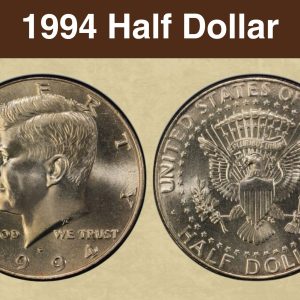
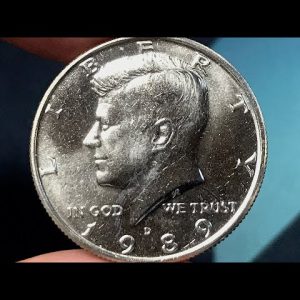
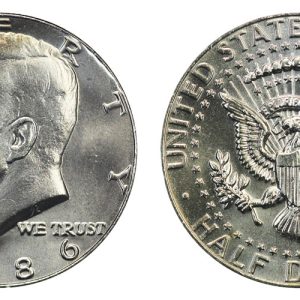
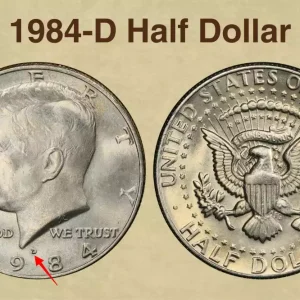
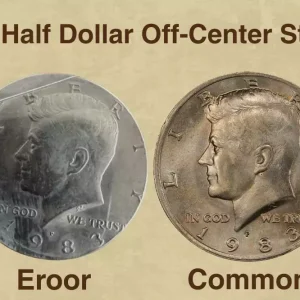
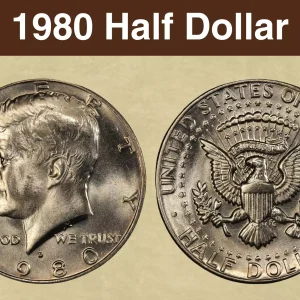
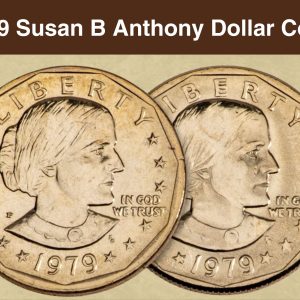
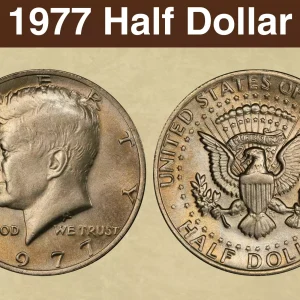
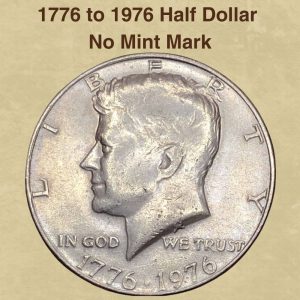
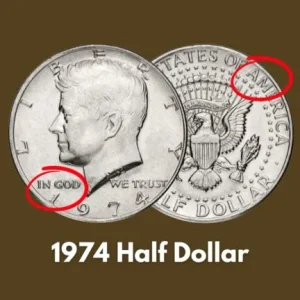
How much is a 1949 S Franklin half dollar worth?
A 1949-S Franklin half dollar is worth between $9 and $26 for circulated coins, with higher grades like Very Fine-20 valued at about $19-$26. Uncirculated coins are worth more, ranging from about $78 ( MS-63 ) to over $798 (MS-67), depending on the condition. The coin’s base value is also tied to its 90% silver content.
What is the hardest Franklin half dollar to find?
The early proof issues from 1950-1954 represent the most valuable regular-issue Franklin half dollars, with the 1950 proof commanding over $500 in Proof-65 condition. The low mintages—especially the 1950 proof with only 51,386 pieces—make these coins genuinely scarce.
Where is the mint mark on a 1949 half dollar?
On a 1949 Franklin Half Dollar, the mint mark is located on the reverse (tails) side of the coin, above the Liberty Bell’s yoke, and directly below the letter ‘E’ in “STATES”. Coins from the Philadelphia mint will not have a mint mark.
What are the key dates for the Franklin half dollars?
Key dates for the Franklin half dollar series include the 1948, 1949-S, 1953, and 1955 due to their lower mintages, with the 1955 P being particularly notable for its low mintage. Other significant key dates and varieties to look for are the 1949-D and 1960-D in high grades, the 1950-D in high grades, and specific error varieties like the 1955 “Bugs Bunny”.